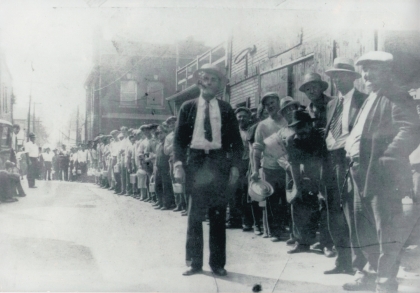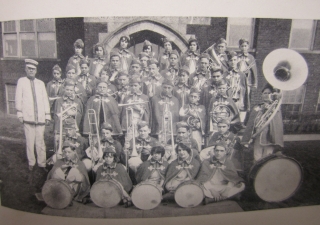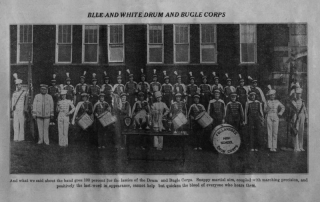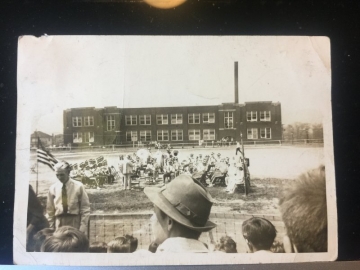[Οι Ελληνες της Πόλης μας]
The original Greek families in Follansbee immigrated to the city from approximately 1910 through the1920s. Organized in 1916, the All Saints Greek Orthodox Church in Weirton was the earliest to act as the spiritual and social center for the local Greek community. Near by in Steubenville, Ohio, the Holy Trinity Greek Orthodox Church was established in 1946.
Among the many Greeks who distinguished themselves in commerce helping Follansbee become prosperous were John Pappas, Pete Giovanakis, and Steve Kohelis. Their business establishments exemplified Follansbee’s golden age of confectionaries -1910-1970. The decline of confectionaries paralleled the closing of the two city high schools, St. Anthony High in 1964 and Follansbee High in1969.
John Pappas, born in Neohorian, Asia Minor, in 1888, came to town in 1914. He operated the “Follansbee Restaurant” with Mike Cornelis in the 800 block of Main street until 1923. Then he took possession of the old Tony Leon building where he remodeled and operated a pool room until 1928.

John’s marriage to Christine Kohelis in 1924 lasted until her untimely death in 1940. In the 1930s, John with Christine opened the “Buffalo Confectionary”. The Buffalo became the city’s most popular hangout for folks of all ages, especially high school kids. John sponsored a popular Buffalo Buccaneers softball team known for their flashy yellow and purple uniforms. In 1937, he moved the confectionary into a new brick building located where the Senior Citizens Center stands today. He managed the Buffalo with Harold Moore from 1942-48, then sold out to Dr. Ralph McGraw in April 1948, and retired.
Beginning in 1930s, Pete Giovanakis was proprietor of the “Strand Confectionery,” more commonly known as the Kozy Corner on Main & Ohio streets. He also opened the “City Confectionery” at Main & State streets. Confectioneries at the time carried a broader range of products. His newspaper ad said, “A winning outfit for School – Complete line of students’ Supplies – and look! A free Pencil with every purchase” In May 1936 the city paper reported that Pete, accompanied by George Kotroumanis, returned to Pete’s boyhood home on the island of Chios, Greece, for the first time in twenty years.
The Kohelis family shared the Greek tradition for entrepreneurship. During the early 1930s, Pete and Mike Kohelis operated a popular billiards room and restaurant called the “Sanitary Quick Lunch.” Cedric and Lula had a Shoe Shine Shop that offered such services as polishing, boot repair and leather care. In the early 1940s, Pete and Steve Kohelis managed the “Royal” movie theater, located in the building currently occupied by today’s American Legion. Steve also operated a joint cigar store-confectionary, and he was a booster for the High School Football team.
The 1930s Depression put local steel and tin plate workers out of jobs. The Kohelis Brothers and John Papus helped sustain a city soup kitchen. In January 1931, they joined others in sponsoring a meeting of the Amalgamated Steel & Tin Workers of Follansbee and Toronto, Oh. The meeting occurred at the Follansbee Moose Lodge. The Toronto delegation chartered a trolley to travel to Follansbee. Over two hundred delegates attended. The program that focused on jobs for union members, “climaxed with a delicious “hot” supper.” Smokes and tobacco were passed out during the evening. The other sponsors were the Wheeling Marsh Company, and Block Brothers, of Wheeling, and James Walmsley of Follansbee.
Mike Chirakopos and Alex Pappas owned the City Grocery (IGA) at the corner of Main & State. In 1931 it was the first town grocery to install metal shelves upon which all store goods were arranged, introducing to housewives the modern “serve yourself” system. Nick Clovis also contributed to the success of the IGA.
During the 1950s-60s, Alex also operated the “Five & Dime” store on Main near where the city library is today. Town folks also remember Charles and Erma Rangos who managed the “House of Fashion” during the 1970s.
Other Greek residents remembered were Pete Kavadas, who was killed during World War II, and awarded the Purple Heart. Pete was son of George Kavadas and Mary Kohelis Kavadas. Another Greek resident was John Xanthakis who died in 1936. Steve Kohelas, William Lampolas, Mike Cornelles, George Elos, William Zimbillis, and Mike Chirakopos all served as American soldiers in World War I.
George Kohelis, with his wife Dianne “Pappas” Kohelis, provided helpful materials regarding the Greek community for this timeline. George graduated from FHS in 1961, played football at West Liberty, and later became principle at Weirton High School. He served as president of the Ohio Valley Athletic Conference in 2000.
![Page1[1] Page1[1]](http://follansbeetimeline.com/wp-content/gallery/picturegallery/dynamic/Page11-1.jpg-nggid03314-ngg0dyn-320x240x100-00f0w010c010r110f110r010t010.jpg)
![Page1[2] Page1[2]](http://follansbeetimeline.com/wp-content/gallery/picturegallery/dynamic/Page12.jpg-nggid03315-ngg0dyn-320x240x100-00f0w010c010r110f110r010t010.jpg)
![Page1[2] Page1[2]](http://follansbeetimeline.com/wp-content/gallery/picturegallery/dynamic/Page12-1.jpg-nggid03316-ngg0dyn-320x240x100-00f0w010c010r110f110r010t010.jpg)
![Page1[1] Page1[1]](http://follansbeetimeline.com/wp-content/gallery/picturegallery/dynamic/Page11-2.jpg-nggid03321-ngg0dyn-240x240x100-00f0w010c010r110f110r010t010.jpg)
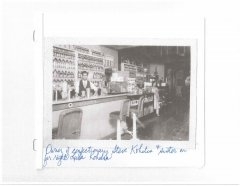
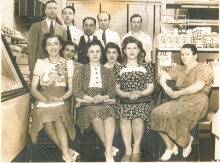
Photo above and to the right is taken in City Grocery
Front Roll: Left -1st Helen Sabol, 2nd Mary Broccolini
Back Roll: 3rd left – Alex Pappas
*Follansbee Review, “Remodeled Pool Room,” Jan. 27, 1922, p. 1.
*Follansbee Review, (Strand/City Confectionery Ad), Aug. 27, 31.
*See Pete Kavadas, West Virginia Veterans Memorial, online.
*Follansbee Review, “Amalgamated Lodges Hold Joint Meeting,” Jan. 15, 1931, p. 1.
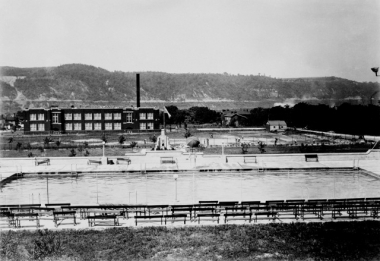 The first swimming pool in Follansbee, with the historic Cyrus Ferguson house seen in background. Circa 1934
The first swimming pool in Follansbee, with the historic Cyrus Ferguson house seen in background. Circa 1934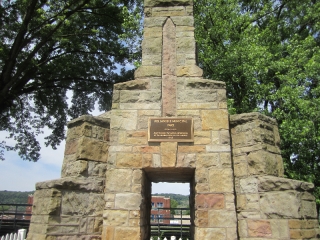
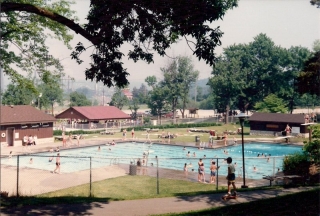
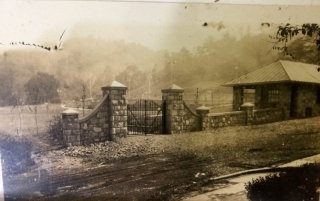
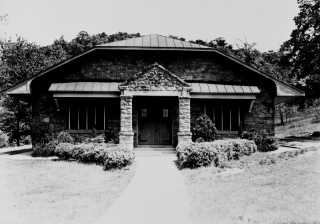
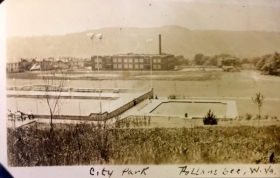
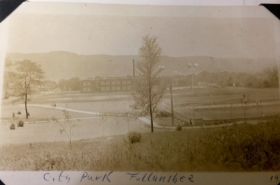
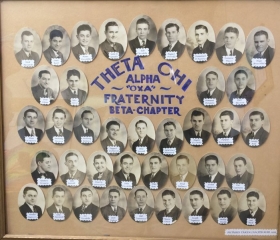
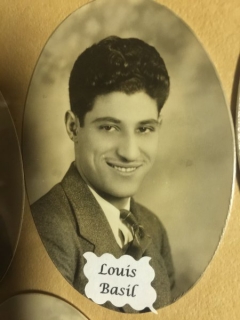
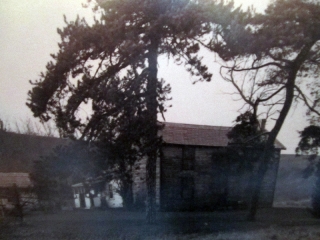



![Page1[1] Page1[1]](http://follansbeetimeline.com/wp-content/gallery/picturegallery/dynamic/Page11-1.jpg-nggid03314-ngg0dyn-320x240x100-00f0w010c010r110f110r010t010.jpg)
![Page1[2] Page1[2]](http://follansbeetimeline.com/wp-content/gallery/picturegallery/dynamic/Page12.jpg-nggid03315-ngg0dyn-320x240x100-00f0w010c010r110f110r010t010.jpg)
![Page1[2] Page1[2]](http://follansbeetimeline.com/wp-content/gallery/picturegallery/dynamic/Page12-1.jpg-nggid03316-ngg0dyn-320x240x100-00f0w010c010r110f110r010t010.jpg)
![Page1[1] Page1[1]](http://follansbeetimeline.com/wp-content/gallery/picturegallery/dynamic/Page11-2.jpg-nggid03321-ngg0dyn-240x240x100-00f0w010c010r110f110r010t010.jpg)


